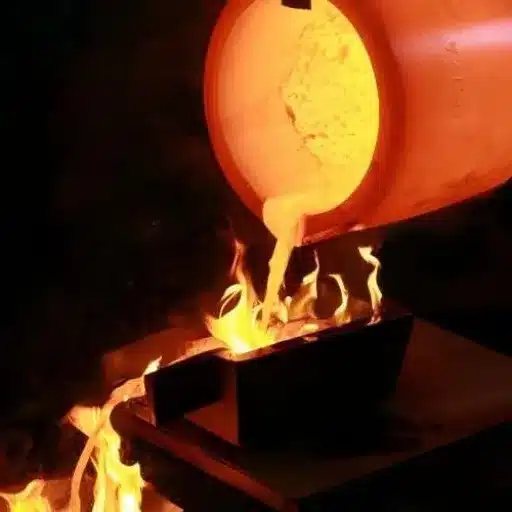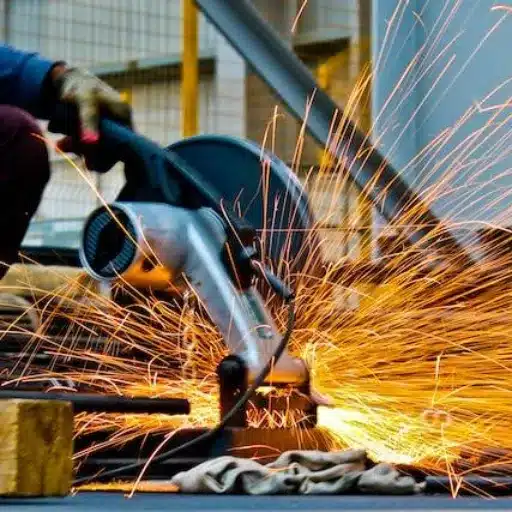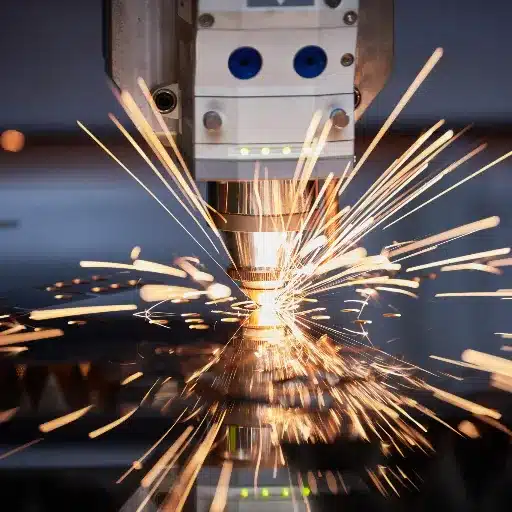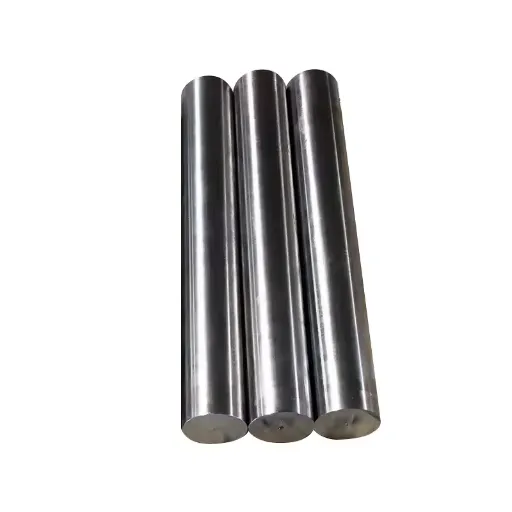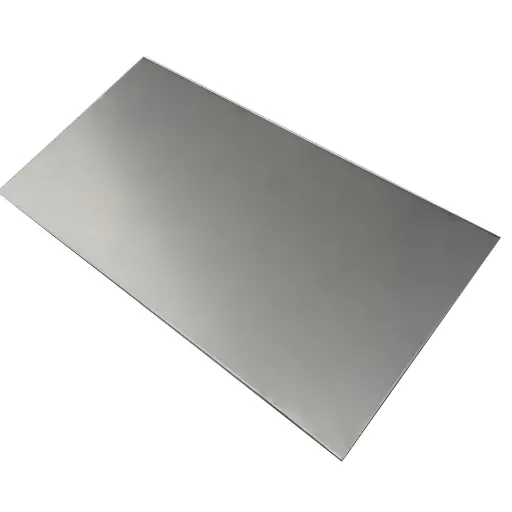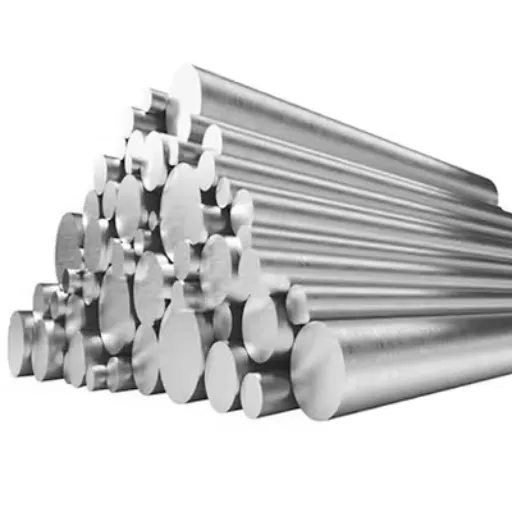Knowing the melting points of various metals is very important for industries like construction, manufacturing, and others. Among metals, steel, stainless steel, and aluminum are very common to many applications. The temperature resistance of the metal can sometimes decide its appropriateness for a specific application. The melting points of metals are very interesting and important, so the blog post is discussing them and comparing different metals based on their melting points and resistance. An engineer, a DIY enthusiast, or a person who is just interested in metallurgy, this guide will provide professional insights into the characteristics of these materials.
Introduction to Melting Points
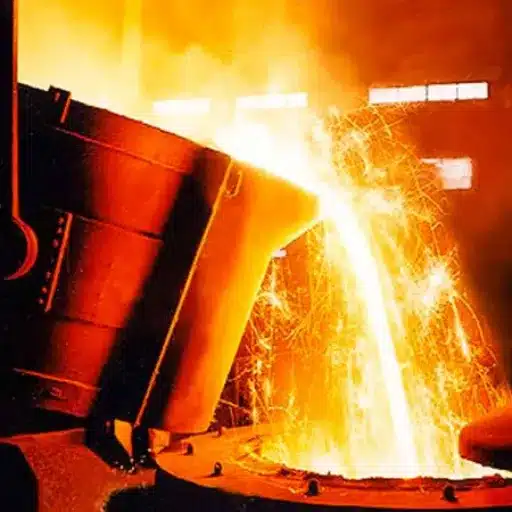
Melting points are important because they indicate the behaviour of metals under extremely high temperatures. In my opinion, it is critical to know melting points in order to select the right material for the particular application-whether that is by guaranteeing the material’s resistance to high-temperature conditions or preventing it from going break when exposed to heat.
Understanding the Concept of Melting Temperature
The melting temperature which is interchangeably used with the melting point is the temperature where a solid transforms into a liquid. The process takes place when the input thermal energy is enough to break all the molecular bonds between the particles of the solid. For pure substances, melting takes place at a constant temperature while in the case of alloys or impure substances; the melting occurs over a range of temperatures.
Melting points are crucial determinants of thermal stability of a material and have the power to dictate the material’s use in the various industries. For instance, metals like tungsten that have 3,422°C (6,192°F) as the melting point can be used in the manufacture of lighting bulbs and advanced aerospace technology because the melting point is extremely high. Conversely, aluminum that melts at about 660.3°C (1,220.54°F) is widely applied in the manufacturing industries due to the good combination of its properties: durability and workability.
Importance of Melting Points in Material Science
A material’s melting point is a basic property in material science that determines the conditions under which the material can be processed, used, or produced. For example, tungsten (3,422°C/6,192°F) which is a high-melting-point metal is suitable for extreme-heat applications and thus is used in filament production and aerospace engineering. However, aluminum (660°C/1,220°F) is used in energy-efficient applications because of its moderate melting point and lightweight characteristics.
Knowledge of melting points is needed for industries such as electronics to safely select materials for soldering that need very protentious melting temperatures to avoid damage to sensitive components. For example, soldering materials are often made to have melting points that range between 180°C to 260°C (356°F to 500°F), in order to be compatible with electronic devices. Likewise in additive manufacturing (3D printing), the melting point of titanium alloy powders which is around 1,600°C/2,912°F has to be strictly controlled for print quality and structural integrity.
Melting Point of Steel
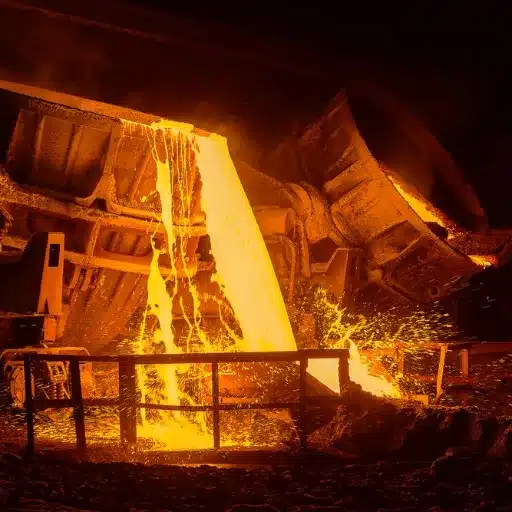
Steel’s melting point is predominantly determined by its elemental makeup but is still pretty universal in a range of melting points from about 1,370°C to 1,510°C (2,500°F to 2,750°F).
Definition and Significance of Melting Point of Steel
Steel melting point is the threshold when it changes its state completely from solid to liquid. Mostly, this temperature for different kinds of steel is between 1,370°C (2,500°F) and 1,500°C (2,732°F) depending on the alloy to be used. Steel is an alloy with iron as its major constituent and a minor percentage of carbon, besides others like manganese, chromium, and nickel. The melting point of steel is also dictated by the presence of these other components which have a bearing on its thermal properties.
Knowing well the melting point of steel has been so far seen as very important in tech and industrial fields. For example, it is the one that controls the temperature ranges in casting, welding, and forging, where controlling the thermal impact to precise material properties is of utmost importance. Additionally, industries like building, car industry, and aviation depend on steel’s high-temperature resistance along with its mechanical strength.
Factors Affecting the Melting Point of Steel
Chemical Composition
The melting point of steel most importantly relies on the elements used in the alloying. Almost the same amount of pure iron has a melting point of 1,538°C (2,800°F). Nevertheless, when elements such as carbon, chromium, manganese, and nickel are added, this temperature is affected accordingly. For instance, the presence of carbon at various percentages in steel reduces its melting point. The general trend is that less-carbon and stainless steels have higher melting points than high-carbon steels because carbon infers the forging ability of iron by shattering its lattices. In contrast, stainless steel, which incorporates chromium, usually maintains a melting range of 1370°C to 1510°C (2498°F to 2750°F) due to its characteristic properties.
Alloying and Microstructure
Advanced alloying and microstructural engineering further influence melting point of steel. Incorporation of tungsten or molybdenum can raise the thermal resistance of steel and open up its uses in high-temperature settings. Studies indicate that melting point can be adjusted by controlled crystallization and grain refinement at the same time enhancing strength and thermal tolerance.
External Pressure
Pressure also affects melting points. If pressure increases the atoms in steel rearrange themselves and the temperature at which the solid changes to liquid is slightly different. This effect still needs to be considered as a big challenge in certain extreme conditions such as the depths of sea or space.
Comparison of Melting Points
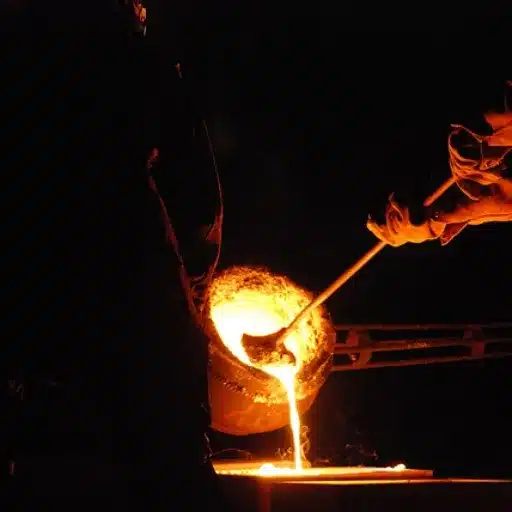
I think the melting point of steel generally depends on its composition, grain structure, and the externally applied pressure. The melting point of the material can be open to change depending on several factors, alloys, fine-grained structures, and high-pressure conditions, thus enabling its use in various specialized applications.
Melting Points of Common Metals
Iron (Fe): ~1,538°C (2,800°F)
Iron is the main material in steel and the reason for its strength and durability.
Aluminum (Al): ~660.3°C (1,221°F)
Aluminum is a lightweight metal with excellent corrosion resistance that is widely used in the automotive and aerospace industries.
Copper (Cu): ~1,085°C (1,985°F)
Copper which has got very good conductivity is highly appreciated and is generally used in electrical wiring and making electronics.
Gold (Au): ~1,064°C (1,947°F)
The distinctiveness of the gold like the inability to tarnish and being conductive makes it perfect for jewelry and electronics.
Silver (Ag): ~961.8°C (1,763°F)
Silver is valued for its reflection and conductivity, making it highly utilized in the production of mirrors and electronic parts.
Titanium (Ti): ~1,668°C (3,034°F)
Thanks to its very light weight, and strong yet corrosion resistant nature, titanium is indispensable in the aerospace, medical, and marine industries.
Zinc (Zn): ~419.5°C (787°F)
Zinc is often the element in protecting steel from corrosion by galvanizing.
Lead (Pb): ~327.5°C (621°F)
Lead has a low melting point and hence its usage in batteries and as a radiation shield is limited.
Nickel (Ni): ~1,455°C (2,651°F)
Nickel is an important metal in stainless steel and high-temperature resistant alloys for thermal protection.
Stainless Steel vs. Carbon Steel Melting Points
Behind those numbers, Stainless Steel has a melting point that usually lies between 2,500°F and 2,800°F (1,370°C to 1,540°C). The precise melting of the alloy varies mainly depending on the specific alloy composition, especially the amount of chromium and nickel which are the main features of stainless steel. Its fusion point is way above that of regular steel, helping it to be used in very difficult non fossil applications like aerospace or energy industries where heat is an issue.
Carbon Steel, conversely, is associated with a melting point usually below that of stainless steel, somewhere within 2,600°F to 2,800°F (1,427°C to 1,540°C). The range of melting point is mainly determined by the amount of carbon in the steel; the more carbon there is, the lower the melting point becomes. At the same time, it is an ongoing debate whether carbon steel is more resistant than stainless steel; however, it still has its advantages over stainless like the strength it possesses, low price and good heat conduction which have made it even more suitable for such applications as construction and tools.
Practical Applications in Industries
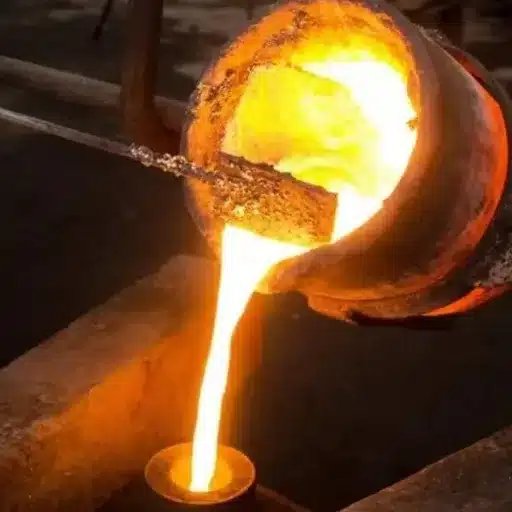
Impact of Melting Point on Manufacturing Processes
A decisive factor in choosing the material for any manufacturing process, the melting point of a material also determines its performance to a great extent. For example, tungsten (melting point of 3,422°C or 6,192°F) is one of the metals that can stand very high temperatures, hence it has been used to great advantage in applications like electrical filaments or aerospace parts. On the other hand, aluminum (660°C or 1,220°F) which can be melted at much lower temperatures is used in places like the automotive and packaging industries where energy saving and easy shaping are the main concerns.
The melting point of a material also marks out the kind of manufacturing process that is likely to be employed. For example, molding and casting are two processes suitable for use in low melting point metals, as they are less energy-consuming and do not require complex machinery. By contrast, forging, welding, or employing powder metallurgy are common practices for high-melting-point materials in order to maintain their structural integrity in adverse conditions.
Construction and Engineering Applications
Melting points of materials as well as their precise control and understanding are vital to the construction and engineering applications. In metal fabrication and welding, for example, choosing metals depending on their melting points results in the creation of a strong and long-lasting structure under varying environmental conditions.
Moreover, in the case of concrete reinforcement, metal bars or meshes have to endure high temperatures without losing their strength. Thus, materials like stainless steel that has a melting point close to 2,550°F (1,400°C) are chosen for installations in fire-risk zones. Recent studies have given evidence that the use of high-performance alloys in construction may lead to a reduction of up to 20% in maintenance costs, as their deformation and corrosion resistance are the main factors contributing to this saving.
Recent Advancements in Steel Melting Technologies
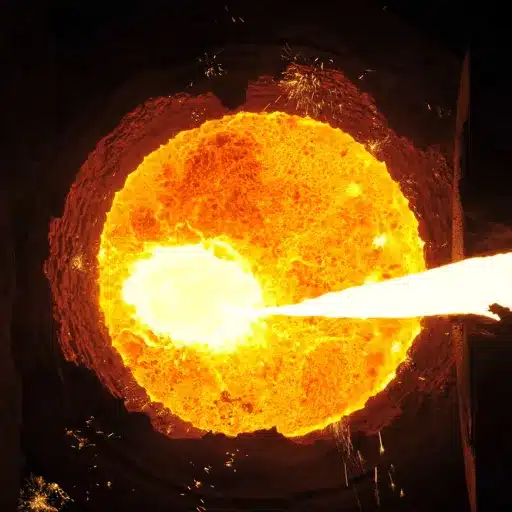
Emerging Techniques in Steel Melting
The technological innovation in the steel melting sector has mainly been focused on attaining a more efficient and sustainable process while at the same time being cost-effective. The whole process has been more or less dictated by the ever-increasing global consumption of high-quality steel. One important emerging method that is getting much attention at the moment is that of hydrogen-based steelmaking, which aims at phasing out the existing carbon-heavy methods. As per the recent research findings, getting rid of the carbon dioxide in the blast furnaces with the help of hydrogen can lower the total emissions from these furnaces to just 10% of the original amount, thus, marking a significant milestone towards the decarbonization of the steelmaking sector.
Groundbreaking subject of the innovation that is coming up is It is Electric Arc Furnace (EAF) that makes use of AI and IOT technology integration. The EAF method of melting facilitates the reuse of scrap steel and at the same time lowers the melting process’s energy intensity. The facilities equipped with the real-time monitoring system that is powered by smart sensors optimize the energy consumption and hence, the material waste is reduced. The combination of EAFs with renewable sources of energy opens up an avenue for carbon-free operations.
Future Trends in Steel Production
The steel industry is majorly changing its characteristics as it takes on the world issues like climate change, resource depletion, and the prerequisite for eco-friendly solutions that are becoming the main demand. The utilization of green hydrogen as the replacement of coal in the blast furnace is one of the absolute most prominent trends in steel production which leads to a significant decline in carbon dioxide outputs. The International Energy Agency (IEA) states that riding on green hydrogen could potentially reduce the steeling emissions by as high as 90%, aiding the sector in its quest for carbon neutrality.
The switch on the other hand is the movement towards the use of Electric Arc Furnaces (EAFs), which melt scrap steel with electric energy and require energy that is much less than that of the conventional blast furnace method. According to the figures of the World Steel Association, EAFs will be in charge of over 50% of crude steel production by 2050. This is further made possible by the continuous development in renewable energy production and the corresponding decrease in the carbon intensity of the electricity for steelmaking.
Reference Sources
-
Industrial Metal Service
- Title: What Is the Melting Point of Steel?
- Summary: This source explains the melting temperature range of steel (1370°C to 1530°C) and discusses how the type of steel alloy affects its melting point.
-
Tuling Metal
- Title: What Is Steel Melting Point? Why Is It So Important?
- Summary: This article provides insights into the melting temperature range of steel and factors like composition and crystal structure that influence it.
-
SteelPro Group
- Title: What Temperature Does Steel Melt?
- Summary: This source details the melting points of various types of steel, including carbon steel and stainless steel, and their industrial relevance.
Frequently Asked Questions (FAQs)
What is the melting point of stainless steel?
Depends on the type, the melting point of stainless steel varies but generally ranges from 1350°C to 1450°C (2460°F to 2640°F). For example, austenitic stainless steels have a melting point on the higher end of this range owing to their alloy composition.
What are the factors that influence the melting point of steel?
The temperature at which steel melts can be influenced by many factors, one of which is the presence of impurities such as sulfur and carbon. The addition of alloying elements into the steel mix can also have a marked effect on its melting point as well as other properties, thus leading to differences in melting points among the various kinds of steel.
Who is the king of metals with regard to melting point?
Without a doubt, tungsten has the highest melting point of all the metals, which is roughly around 3422°C (6192°F). The extreme melting temperature makes tungsten suitable for being used in areas like light bulbs and aerospace parts that require a high-temperature environment.
Which metal has the lowest melting point?
Mercury is the metal that has the lowest melting point because it melts at -38.83°C (-37.89°F). This characteristic allows mercury to be in a liquid state at room temperature which is quite rare among metals.
What are the various kinds of steel and their characteristics?
Some of the types of steel are: low carbon steel, high carbon steel, alloy steel, and tool steel which have different properties. As an example, low carbon steel is characterized by its ductility and ease of welding, whereas high carbon steel is the opposite of low carbon steel in that it has a very high tensile strength and hardness thus making it suitable for use in cutting tools.

